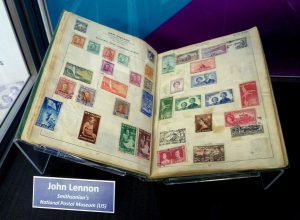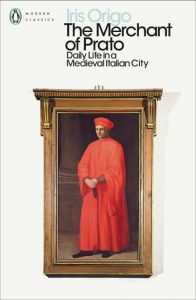Ok, I only wrote that to get your attention.
But … there is some truth in it. The stamp-collecting side of family history, adding name after name and pasting them into the album, can be compulsive, but it’s a little dull. As my mother used to say, “What are you interested in them for? Sure aren’t they all dead?”

So why do I do it? First off, the research can be good fun. A lifetime of mislaying car keys has left me with a passion for finding things. Fitting them together once they’re found can also be deadly – all those gnarly little puzzles entangling records and families.
More seriously, a lot of genealogy involves reknitting broken family connections and uncovering forgotten family members. I remember one woman telling me about a family photograph from the early 1900s from which her great-grandmother’s face had been cut out. This was the only picture of the woman that survived and the family had long wondered if this was revenge in some long-forgotten feud. Then, clearing out a deceased grand-uncle’s attic, she found a locket with the cut-out photo. Far from revenge, it was love that had taken the face.
And genealogy is also the business end of microhistory, famously defined by Charles Joyner as the ‘search for answers to large questions in small places’. All of the written histories that have stayed with me are small scale with great ambitions: Iris Origo’s mesmerising reconstruction of the life and character of a run-of-the-mill thirteenth-century Florentine trader, The Merchant of Prato;  Emmanuel Le Roy Ladurie’s Montaillou, three decades of a medieval French village brought stunningly to life;
Emmanuel Le Roy Ladurie’s Montaillou, three decades of a medieval French village brought stunningly to life;  Frank Dikotter’s monumental evisceration of Mao and his legacy, The Tragedy of Liberation, Mao’s Great Famine and The Cultural Revolution, all done with local archive material and eyewitness accounts, creating an unanswerably detailed mosaic of everyday horror.
Frank Dikotter’s monumental evisceration of Mao and his legacy, The Tragedy of Liberation, Mao’s Great Famine and The Cultural Revolution, all done with local archive material and eyewitness accounts, creating an unanswerably detailed mosaic of everyday horror.
In Ireland too, small places have raised large questions. The townland of Ballykilcline in north Roscommon was the scene of a violent rent war in the 1840s. The end result was the dispersal and emigration of almost its entire population. Two wonderful matching microhistories tease out the causes and consequences. Robert Scally’s The End of Hidden Ireland (1997) describes the conflict, resulting evictions and mass emigration, and Mary Lee Dunn’s Ballykilcline rising: from famine Ireland to immigrant America (2008) takes the story up on the other side of the Atlantic.
One thing all microhistories have in common is that they always, rightly, show lives as ever more complicated, always unfinished, with no simple moral tally.
So in future, when people ask me what I do, I’ll tell them I’m a microhistorian. All 5’6″ of me.
Loved this post. When you gave your height, it reminded me of my 6’1” husband’s comment after one of my family’s wakes. “You know who all the Hughes men are, just look for those under 5’7”!” That held until my generation married tall men so the younger lot tower over their Das! We Hughes folk identify each other buy the deep blue Hughes eyes.
Keep up your valuable work!
Slan
Mary-Joan (Hughes) Hale
I’m enjoying all your posts but this one in particular for several reasons. I love learning the history of the time my ancestors lived especially those of the people I’m having trouble locating. Reading the history of the time makes me feel closer to my elusive ancestors. I’ve read both of the books you’ve referenced and highly reccomend them. They show why so many had to, or were made to, emmigrate. One question; has anything been studied or written about how many chose not to leave after the travesty that was Ballykillcline. I’m sure some of them are from my lineage and it would be interesting to find out what resources they had or what reasons they had for staying. It was certainly a sad situation that changed history in both Ireland and every place these souls landed.
John, your insights and observations are delightful. Thank you.
John, An enjoyable read. Not everyone has the urge to be a microhistorian. I appreciate others who are. Thanks for this blog. Jim
“People who define themselves in terms of their ancestry are like potatoes—the best parts of them are underground” – Chevy Chase
I just started in January with a DNA test then the site im so addicted.
The most insightful and entertaining microhistorian I know ! Lean leis an obair. 🙂
I have always felt the best history is local history. It is more personal. You cannot get more personal than one’s own family.
Thank you for the reference to Robert Scully’s book, which I ordered used on AmazonSmile for all of $15.00. I have two 2nd great grandmothers who emigrated from Ireland in the Great Hunger period, one from Co Mayo and the second a complete mystery after many years of searching until she marries into my Ann Arbor Michigan Maloy/Quinn family. Sure Margaret Dunn of “Ireland”, daughter of John and Mary Dunn? What no Patrick?
Thanks so much for mentioning “End of Hidden Ireland”. We recently did some intensive geneaologizing in Minnesota USA, where our goal was to find out where several family lines originated in Ireland. We discovered one ancestor who had come from Kilglass, Co. Roscommon, very near the setting of the microhistory described in “The End of Hidden Ireland”. I read that book most eagerly – expecting at any moment to see my ancestors’ names. It didn’t happen but I was still so grateful to get such a detailed view of the culture and the situation leading to the massive migrations so relevant to my ancestors’ lives. Fantastic! And because of this article, I just ordered “Ballykilcline Rising”. Thank you!